9 Traditional Naxos Villages You Have to Visit
Greek Island Bucket List is an Amazon Associate and participant in other affiliate programmes. I earn from qualifying purchases. Please see my disclaimer for more information.
Exploring Naxos villages is one of the best things to do on the island. You don’t have to travel far from Chora to find traditional settlements and glimpses of life beyond tourism.


Villages of Naxos
There are quaint narrow streets, pretty corners, street cafes and interesting buildings at every turn. Many of these villages are connected by hiking trails which is a lovely way to discover them.
Alternatively, take a drive around the island and stop at the villages that take your fancy. If you don’t have a car you can still reach some of Naxos’ villages by bus.
It will be easier in the peak summer months to find regular buses to these places. You can also join a bus tour of the island that includes some of these villages.


n
See also Do I Need a Car in Naxos?
So here are 9 traditional villages to visit and enjoy as part of your vacation/holiday to Naxos.
Apirenthos
Apirenthos, the marble village, has been voted one of the prettiest villages in Europe. You’ll find it in the middle of the island, way up above sea level. You can’t even see the sea, just mountains and lush valleys. Apirnethos has a number of small museums, winding marble streets, shops and street cafes.
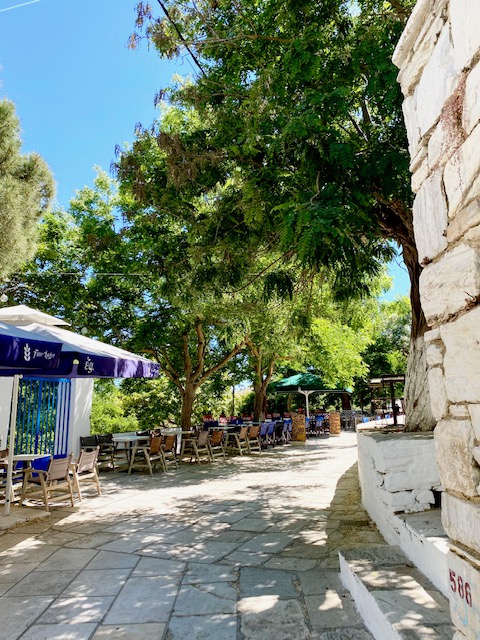

Cafe tables in Apirenthos
The culture and dialect in Apirenthos are a bit different to the rest of Naxos. The original villagers who settled here came from Crete and the village has retained a Cretan influence.
You can’t take cars along the narrow streets so you’ll need to use the car park off the main road outside the village. Take care as you’re driving as I’ve seen mules parked up as well!


Museums and Tower
Apirenthos has a surprising number of museums considering its size, although some are just tiny. Have a look while you’re there. You can find Apiranthos Folklore Museum, Apiranthos Archaeological Museum, Apiranthos Natural History Museum, Fine Art Museum and the Geological Museum.
Filoti
Filoti is the biggest village in Naxos and is actually made up of three settlements. Its whitewashed cube houses are built into the mountains in a semi-circle like an amphitheatre.
It’s a popular place for tourists to visit with many cafes, tavernas and shops in the square around the plane tree. Take a stroll around the streets and see the Tower of Barozzi and some of the many churches in the area.


Filoti Village
Nearby you’ll find Aria Spring, Cave Zas and the walk to the summit of Mount Zas.
Chalki / Halki
Another significant Naxos village is Chalki, (sometimes written as Halki) on the road towards Filoti. It looks very different to most of the other villages on the island as the buildings have a strong Venetian influence.
Have a wander through the narrow streets off the main road. There are interesting shops, the lovely Fish and Olive Gallery and plenty of places to sit and have a refreshment.


Chalki Village
Other things to see and do are the Folklore Museum Chorianopoulos and Kitron tasting at Vallindras Distillery and there are some nice churches to walk to beyond the village.
You’ll see wooden waymarkers for some of the Naxos Strada walking routes. You can have a short walk behind the buildings to see some of the churches back from the main road.

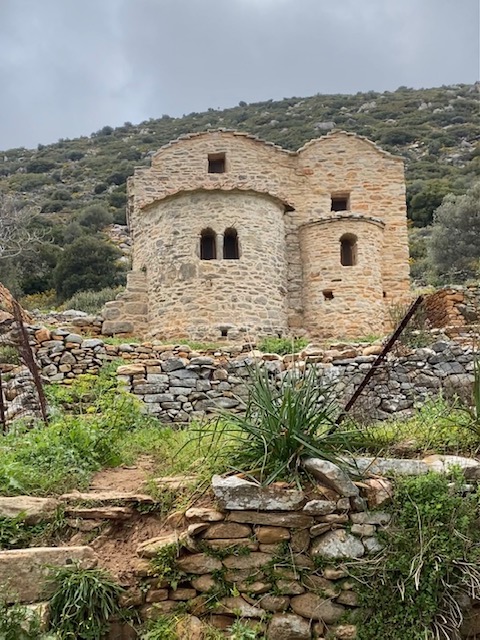
Church of Drosiani and Agia Isidore
Damalas
Damalas village is just off the road to Chalki. It’s very small with a nice little olive press museum, a folklore museum and a pottery shop.
There’s a big pottery shop on the main road too, just as you turn down to the village. Both shops are owned by the same person and if you’re lucky you can sign up for a lesson.


Damalas Village
Cycladia cultural centre is just outside the village on the main road. Pop in for a drink while you’re there and see what events or concerts they have going on during your stay.
Potamia
Potamia is actually 3 villages, Ano Potamia, Mesi Potami, and Kato Potamia. There’s a nice walk that connects the three of them and hikers will love the surrounding area. Potamia means river so the vegetation’s very lush and green thanks to the nearby stream.
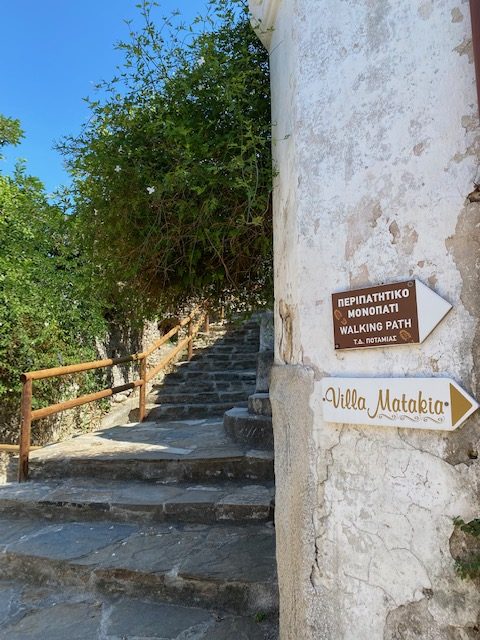
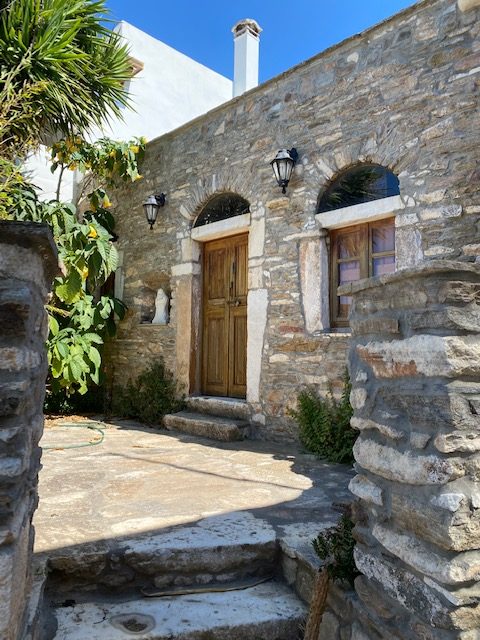
The Potamias
Walking in this beautiful area, you’ll find stone bridges, old olive mills, watermills, tavernas and lots of churches. The Saint Anna Winery is also at the edge of Kato Potamia.
Eggares
Eggares is about a 15-minute drive from Chora. The best thing about this village is the Olive Museum. You can have a tour of the press and then a really well-organised tasting of a variety of olive oils and several different types of olive products.

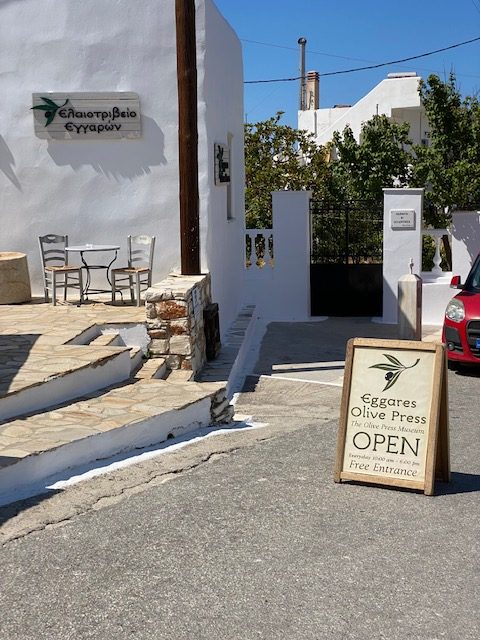
Egares Village
Hike 11a runs through this village. If you’re not up for a big hike but fancy stretching your legs you can follow have a 20-minute walk to the river.
Vivlos
Vivlos, also known as Tripodes, was named for its 3 windmills. They’re quite run-down now but perhaps nice to visit if you’re passing through. There’s also a little Folklore Museum in the village. Head towards the windmills and then pick up the signs for the museum.


Vivlos/Tripodes Village
There are some nice restaurants and a little bakery around the main road. Just past the village, you can also visit Little Farm.
You can have a tour of the fruit and vegetables grown on the land and the cheese the farmer makes. There’s a nice little shop where you can buy various produce and support the local economy.
Moutsouna
Moutsouna is a little seaside village on the west coast of Naxos. It feels a little remote as it’s about an hour’s drive from Chora. Apirenthos is about 30 minutes away and you turn off the road to go to Moutsouna just before you get to the parking.
Once you do the road is narrow with several hairpin bends but it’s ok to drive. The tarmac is in good condition and it looks like the road has been recently widened.
Although it’s narrower than the road you were on, it’s not awful. And it’s certainly a beautifully scenic route. You’ll see out over the sea to Danoussa. Closer you’ll be treated to hills of olive trees and other greenery.


Moutsouna Village famous for its emery
Moutsouna is pretty tiny and although it’s quite sleepy the rest of the year I’m told it can get busy in summer. There are two small sandy beaches and then some other coves if you drive on towards Panermos.
What’s interesting about Moutsouna is that it was an important harbour when emery was in demand. By the beach, you can see the train tracks from when the stone was transported. There are remains of the emery mines way up past Apirenthos near Koronos if it interests you.
Melanes
Another traditional Naxos village to visit is Melanes. As you drive up you can see the marble on the hills beyond. The way it’s been mined makes it looks like it’s been cut like slices of butter! Melanes has typical narrow whitewashed streets and lots of steep steps.
It’s close to the Kouroi and old watermills.

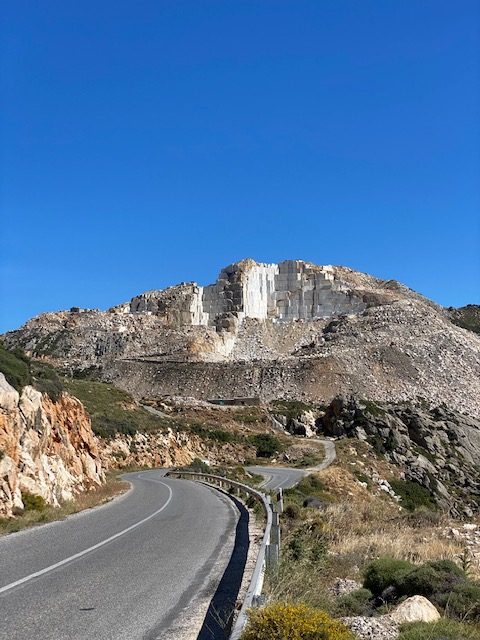
Choose Just a Few Naxos Villages to Visit
So there you go, nine of the many villages in Naxos. There are even more to discover but too many lovely places to visit can make things a bit overwhelming. Don’t necessarily try and visit all these villages in one trip. You can always come back to Naxos again!
If you want to visit a little cluster together then Chalki, Filoti and Apirenthos are on the same route. Vivlos, Melanes and Eggares and close enough that they could be done as a little tour together too.
Remember that you might be close to some of these villages anyway if you’ve already planned to do some of the 27 Best Things to Do in Naxos


Suzie Young
Suzie writes informative posts for solo, nervous or first-time travellers to Greece, Turkey and other countries on her 50-before-50 bucket list. She became a Greek resident in 2020 and intends to visit every inhabited island (13 down!).
